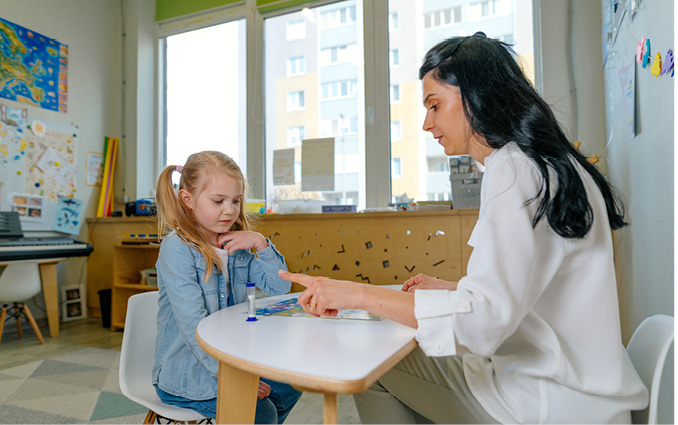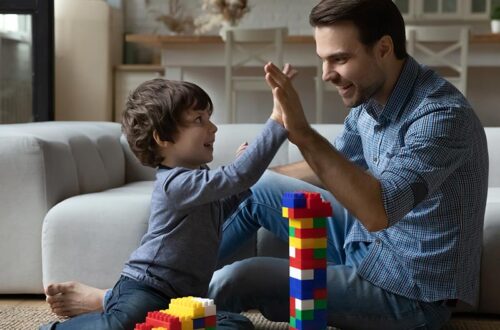The notion of Positive Time-Out came out of Positive Discipline. Positive Discipline is a parenting approach that promotes a relationship-based, mutually respectful, and developmentally appropriate way of meeting children’s needs for belonging and significance while teaching them valuable social and life skills. Under the Positive Discipline model, the disciplinary tool known as “time-out” has been transformed into the Positive Time-Out, a parenting tool aligned with the idea that when we model respect, engage in connection before correction, encourage (rather than punish) discouraged children, and help meet children’s psychosocial needs, children are more likely to feel and do their best.
Different Types of Time-Out
Imagine a group of children playing in a soccer game, their hearts and lungs working hard as they run back and forth across the field kicking the ball. At long last, their coach offers them a much-needed time-out, an opportunity for them to rest, recharge, and receive encouragement so that they can feel and do their best once they’re back on the field.
Now imagine two children fighting on the playground. A teacher who sees this immediately becomes upset and sends both of them away to take a time-out which entails sitting alone on a bench during a portion of what would have been their playtime.
While both of these scenarios include the use of a time-out, only the former has the effect of helping children to feel better so they can do better.
Addressing challenges by creating space for children to feel and do better, however, is just the surface goal of Positive Time-out. The long-term goal is for children themselves to acquire the self-regulation skills that enable them to recognize when they need to take care of themselves and do so in appropriate ways.
The Theory of Positive Time-Out
In emotionally-charged moments, children can become reactive and exhibit challenging behavior.
The traditional disciplinary approach of time-out is punitive in nature as it places emphasis on wrong-doing and results in children being sent away to experience isolation.
That approach leaves children feeling blamed, shamed, angry and alone, all of which may cause children to exhibit yet other undesirable behaviors. While problematic behaviors that children exhibit do very much need to be addressed, the Positive Discipline parenting tool of Positive Time-Out is designed to be therapeutic rather than punitive.
When provided some time to calm down and engage in something soothing, children tend to feel better and thus do better. That time also affords adults the opportunity to reconnect with the children before attempting to figure out what is contributing to the challenging behavior.
It’s worth revisiting the second scenario (above) to show an example of how the teacher could instead use a Positive Time-Out. After stopping the fight, the teacher might then separate the children from one another and encourage them to take a few minutes to do things that the children have already identified as their preferred calming activities (e.g., walking, drinking water, looking at books, etc.).
Once the children have calmed down, the teacher could then check in with them to see how they’re doing/feeling, and ask them to describe what they think led to the fight. The teacher would help them identify respectful solutions to resolve the conflict. As an adult, the upset teacher can be responsive (as opposed to reactive) in this situation, and in doing so, model emotional-self regulation and solution-oriented thinking.
Guidelines for Positive Time-Out
Involve The Children
1. Positive Time-Out is meant for children 3 years and older.
2. Openly discuss the purpose of Positive Time-Out.
3. Invite children to identify their preferred spaces/activities that help them to feel calm.
4. Let children design a calming space and decide what objects should be there (music, books, stuffed animals, etc.).
5. Until children acquire the self-regulation skills they need to initiate their own Positive Time-Outs, adults need to help them do so (in a kind, firm, and mutually respectful way).
The Thinking Brain vs. The Survival Brain
Brain function supports the use of Positive Time-Outs. The human brain is uniquely equipped with a highly-developed prefrontal cortex, which governs critical thinking (our ability to make rational decisions and understand consequences). Children (and even young adults) don’t possess optimal critical thinking skills simply because their prefrontal cortex is far from being fully developed.
While the prefrontal cortex is important, the brain’s primary goal is survival. When the brain perceives physical or emotional threats, a part of the survival brain (the limbic system) known as the amygdala sends us into fight, flight, or freeze mode. In those modes, people (of all ages and stages) have virtually zero ability to access their prefrontal cortex and engage in rational thought.
Punishment is interpreted as a threat and impedes children’s ability to listen to instructions or understand what we want them to learn. When subjected to punitive time-outs (and other forms of punishment), what children instead “learn” is that adults represent a threat to their safety.
Conclusion
In sum, given all that we’ve learned about the brain, the nature of trauma, the safety that underpins our ability to think and thrive, and the dire need to transform our culture of violence into one of respect, Positive Time-Out is a great tool for children (and parents alike) to use.
Steven Weiss and Sarah Nofi are Certified Positive Discipline Parent Educators








